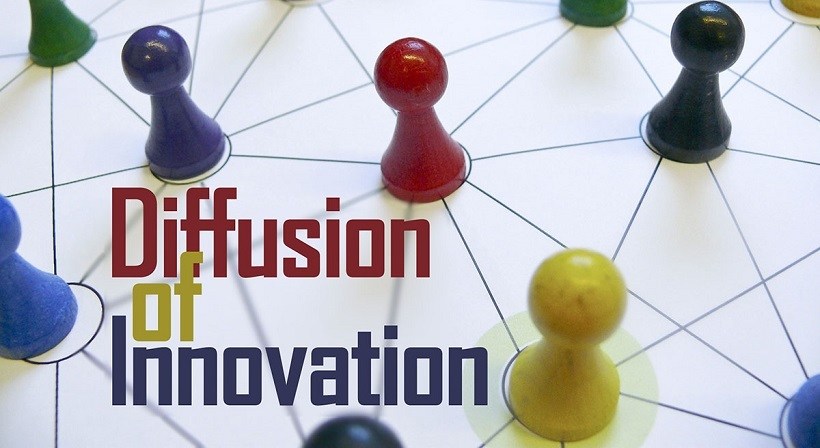Prevent Innovation Failure And Thrive
Innovation is novelty that creates value for customers and stakeholders. While more than 80% of executives surveyed by McKinsey in 2021 said that innovation was one of their three key priorities, only 10% are content with their team innovation efforts. If innovation is ubiquitous, why is it so difficult to achieve and sustain? This series of "Innovation Blueprint" articles will explore key elements of cultivating an innovation ecosystem, including measuring and scaling innovation for your organization. This article offers 6 reasons to explore when innovation fails.
Conduct A Hotwash Or After-Action Review
After every major initiative, it is always a good idea to do a hotwash or after-action review. The term "hotwash" originated in the United States Army, where soldiers used to douse hot water on their weapons after firing. The hot water helped clear away debris and other substances that may prevent the weapon from functioning properly.
To engage the team in reviewing past performance and also setting the vision for future steps, it is a recommended practice to ask all team members to share three things that worked well and three things that would need to be corrected, changed, or eliminated going forward in their particular activity or element that is part of the broader innovation effort. If the elements that need fixing or changing outweigh the things that worked well, and the overall impact on the customer was negative, the initiative most likely was a failure and an opportunity to learn and iterate.
As you examine the particulars in the context of your hotwash and organizational efforts, you may uncover specific reasons for the failed innovation effort. Below are some of the most common challenges that negatively impact the success of innovation efforts in organizations.
Lack Of Vision
To succeed in your innovation efforts, you need to set a clear and inspiring vision of why your organization needs to innovate. When vision is lacking altogether, or your vision statement is incomplete or weak, the innovation effort will fail. A great example of such a vision is President John F. Kennedy's speech about going to the moon, where he outlines that the vision will not be easy and that he chose it because it is hard and because it will help organize and measure the best of our energies and skills. He also accentuates a sense of urgency and victory. The speech includes all the key elements needed for an inspiring and empowering vision, including reasoning, clarity, challenge, and urgency.
Lack Of Championing
Innovators need top cover and an environment of psychological safety to explore new ideas, take risks, and innovate. When the organization lacks at least one champion who understands how difficult and risky innovation is, innovation efforts will be less likely to succeed. As a champion, you need to continuously communicate the vision for the innovation, connect it to the organizational strategy and mission, and ensure innovators have the skills, motivation, and tools to innovate. You also need to stay vigilant during the journey to examine risks along the way and to remove obstacles innovators may be facing in their efforts.
Lack Of A Culture Of Innovation
If your organization lacks a culture of innovation, it is more likely that your innovation efforts will not be sustainable. An organizational culture that supports innovation allows the innovation ecosystem to grow and thrive while empowering innovators to connect, engage, learn, and drive new ideas to scale. Fostering a culture of innovation offers opportunities that spark curiosity, allow teams to ask great questions, and embrace failure.
Additionally, as a leader, you must cultivate a culture that embraces change, which entails several elements, including what you monitor and measure, where you allocate resources, how you react to crises, whom you reward, and how you stay ahead of change.
Lack Of Skills
When employees lack the skills they need to innovate, including foundations of design thinking and agile methodologies, their innovation efforts will likely not succeed in the long run. Skills are critical to sustainable innovation efforts, and they include cultivating an innovation mindset, networking, connecting the dots, and storytelling, among others.
To ensure your organization provides learning opportunities so that your innovation teams can build the skills they need to innovate, you must ensure you have an innovation competency skills model in place. Such a competency skills model can help you define the innovation skills needed in your organization and gauge the skills gap across your teams so that you can close it by allocating learning resources and experiences.
Lack Of Motivation
While you may have many of the key elements to foster innovation in your organization, if employees are not motivated, innovation efforts will likely not be sustainable. Motivation is based on self-determination theory and is the reason why people decide to take an action or not.
There are five key theories of motivation, with Maslow's hierarchy of needs being one of the most recognized. [1] The intrinsic and extrinsic motivations are derived from within and from the environment respectively as the key drivers of motivation for individuals. It is critical that innovators are inspired for the right reasons for them to innovate successfully.
Lack Of Resources
Without resources such as funding, tools, and time, innovation initiatives will most likely fail. While big budgets are not necessarily required to design and implement innovation pilots, funding will be needed to scale those innovation initiatives that are successful. Time is a critical resource, whereby the organization allows employees to take the time to explore new ideas and develop them into minimum viable products.
By now, the famous Google 20% rule is a classic. [2] In 2004, when Google went public, co-founders Sergey Brin and Larry Page wrote in their IPO letter that they authorized and encouraged all employees to take 20% of their time to explore new ideas they think will be good for Google's growth. Great successes for customers and performance metrics alike that resulted from this rule include Google News and Google AdSense.
Conclusion
Innovation is hard and often fails. While you will need to conduct a thorough analysis, or hotwash, to determine why innovation failed in your organizational context, some of the key reasons that innovation fails include lack of vision, lack of championing, lack of a culture of innovation, lack of skills, lack of motivation, and lack of resources. Whichever the reasons, the next step would be to embrace failure, learn from the mistakes, and keep plowing forward to inspire and empower the team to innovate again.








